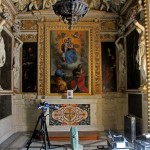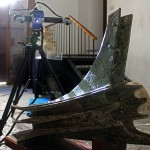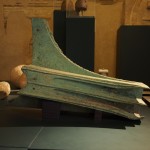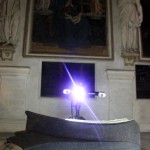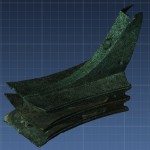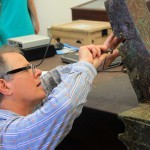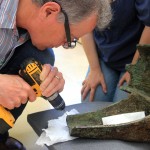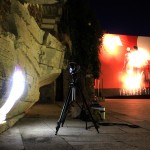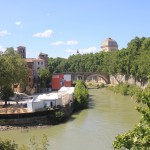The Battle for the Mediterranean: Digitally Recording an Underwater Roman Battlefield
Several kilometers off the Sicilian coast, in over 100 meters of water lies an underwater battlefield that stands testament to one Age replacing another. Using the latest technology and scientific methods from Archaeology, Engineering, and the National Oceanographic Centre at the University of Southampton, these ancient warships are being reverse engineered in order to understand one history’s most critical junctures: the slow decline of the Hellenistic Period and the start of the Roman Period.
The 3rd century BC saw the Hellenistic powers exhaust each other. The great seapower of Carthage should have reaped the benefits, but it was unexpectedly challenged by an upstart city-state from central Italy. While the close of the 4th century saw a Mediterranean in the midst of an arms race and teaming with navies, at the close of the third century only one naval power remained on the ascent and poised to extend its sphere of influence. So secure was this upstart in its new power that the city called the Mediterranean Mare Nostrum: Our Sea. This city was, of course, Rome and its rise was built on seapower and secured through maritime trade. While the end of the Hellenistic Period is traditionally listed as the Battle of Actium in 31 BC, the seeds of Rome’s rise were sown in the mid-3rd century BC. If complexity of Rome’s drive toward Empire can be reduced to the events of a single day, then 10 March 241 BC has as strong a claim as any other. It was on this day that Rome won the Battle of the Egadi Islands, which could very well be named the Battle for the Mediterranean, as the victor took control of the Central Mediterranean for a generation and was by default the most powerful navy in the Sea.
Discovered by Dr Sebastiano Tusa (Soprintendenza del Mare) and Dr Jeff Royal (Director, RPM Nautical Foundation) in 2005, the site of the Battle of the Egadi Islands is just beginning to reveal its secrets. The battle was a turning point in the long and fraught First Punic War. The Roman navy managed to surprise Carthage’s main fleet as it attempted to resupply their general Hamilcar Barca (Hannibal’s father), winning a crushing victory. Two more Punic Wars followed, but the results would be the same and in the end Carthage was destroyed. Dr Tusa and Dr Royal’s article on the battle site is currently available for free from the Journal of Roman Archaeology.
PhD student Peter Campbell (University of Southampton) is using the artifacts from this pivotal battle to reverse engineering the Roman and Punic warships in collaboration with the Soprintendenza del Mare and RPM Nautical Foundation. The most impressive artifacts from the battle are eleven bronze waterline warship rams. Among the rarest of artifacts from Antiquity, only four waterline rams had ever been discovered prior to 2005. The process of this research goes from seafloor through recasting of scale replicas for impact testing. This research is funded by the Southampton Marine and Maritime Institute (SMMI), Honor Frost Foundation, Explorers Club, Historical Metallurgy Society, and in partnership with Aicon and Breuckmann GbmH, who provided the 3D scanner as an academic loan grant.
The first step is high resolution 3D scanning of the rams. This summer eight rams were scanned using a Breuckmann SmartSCAN structured light scanner. Breuckmann scanners offer models accurate to several microns, which allows for a detailed recording of the rams, their inscriptions, and battle damage. The digital models are incredibly accurate and are currently being scaled to 1/4 their original size for 3D printing.
Metal analysis is a key component of reverse engineering the Egadi rams. Professor Ian Croudace from the National Oceanographic Centre has sampled eight rams for a battery of testing. Rams will be tested for elemental composition, lead isotope analysis to attempt to determine metal origin, and a series of tests related to the casting method. This data will be used to create a bronze mix (nearly) identical to the originals for the reverse engineered rams.
This summer’s fieldwork also included scanning key sections of the Isola Tiberina Monument with Professor William Murray (University of South Florida). Built on an island in the middle of Rome, the monument is a critical piece for understanding Roman warships in the 3/2nd century BC. Professor Murray has found the dimensions of the monument match those of larger warships from this period, likely similar to those the Egadi warship fought- and lost- against. The 3D scanning conducted will help to reveal how the bow of the vessel fit into the now missing ram. Professor Murray’s book on these large warships can be found here.
This summer’s fieldwork will culminate in the reverse engineering of exact scale replicas of the Egadi rams. The rams will be produced at the bronze foundry at the Winchester School of Art. The new rams will be used for impact testing to gather quantitive data on how rams behaved while striking ships’ hulls as well as ram-to-ram impacts. Results will be presented as part of Peter’s PhD thesis and published in an upcoming volume by Dr Tusa and Dr Royal exploring this critical battle for the Mediterranean.

